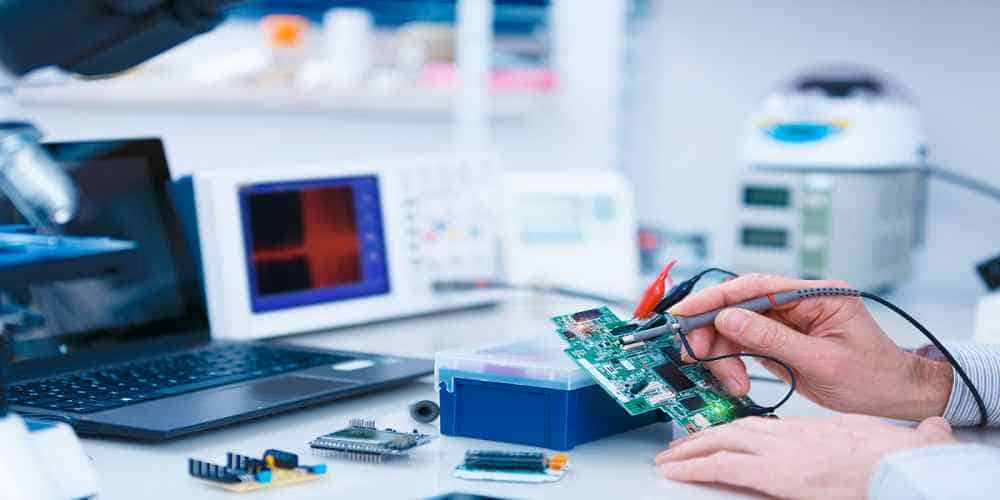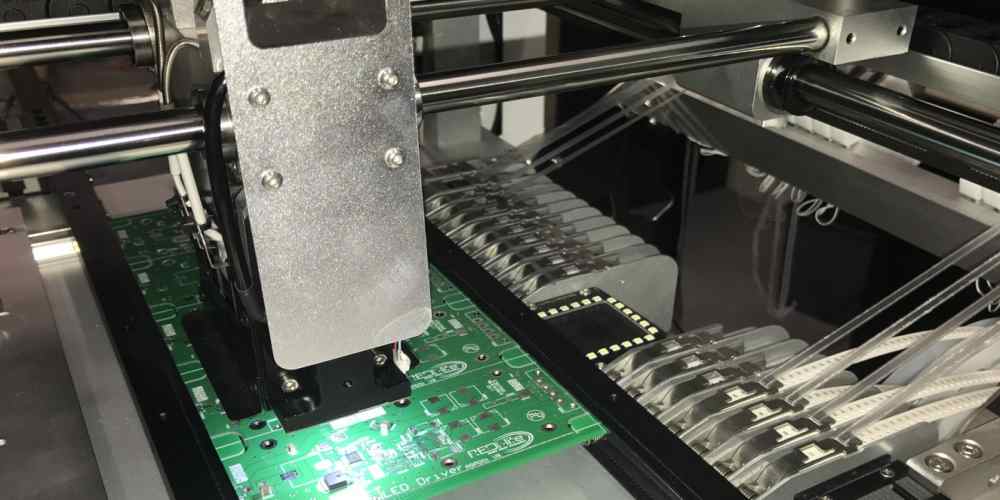DC-DC converters are essential components in modern electronics, providing efficient voltage conversion for a wide range of applications. PCB design plays a crucial role in the performance and reliability of these converters, as it affects the electrical, thermal, and mechanical aspects of the system. In this article, we will explore the key considerations and best practices for DC-DC converter PCB design, covering topics such as layout, component selection, thermal management, and testing.
One of the primary challenges in DC-DC converter PCB design is achieving high efficiency and low noise, while minimizing the size and cost of the system. This requires careful selection and placement of components, as well as optimization of the routing and grounding of the circuit. Additionally, thermal management is critical to ensure that the converter operates within safe temperature limits and does not degrade over time. By following established guidelines and using simulation tools, designers can achieve optimal performance and reliability for their DC-DC converter designs.
Overall, DC-DC converter PCB design is a complex and multifaceted process that requires a deep understanding of electronics, materials, and manufacturing. With the right approach and tools, however, designers can create efficient, reliable, and cost-effective converters that meet the needs of a wide range of applications, from consumer electronics to industrial automation.

Basic Concepts
DC-DC Converter Fundamentals
DC-DC converters are electronic circuits that convert DC voltage from one level to another. They are widely used in electronic devices that require different voltage levels for different components. The basic principle of a DC-DC converter is to use an inductor and a switching device to store energy in the inductor and transfer it to the output. The output voltage is controlled by the duty cycle of the switching device.
There are several types of DC-DC converters, including buck, boost, buck-boost, and flyback. The choice of converter depends on the input and output voltage levels, current requirements, and efficiency requirements.
PCB Design Considerations
PCB design plays a crucial role in the performance of a DC-DC converter. The following are some important considerations for designing a DC-DC converter PCB:
-
Component placement: The placement of components on the PCB can affect the efficiency and performance of the converter. Placing the inductor and switching device close to each other can reduce the parasitic resistance and inductance, which can improve the efficiency.
-
Grounding: Proper grounding is essential for reducing noise and improving the efficiency of the converter. The ground plane should be kept separate from the high-current paths to avoid interference.
-
Trace width: The trace width should be chosen based on the current carrying capacity of the trace. A narrow trace can cause voltage drop and reduce the efficiency.
-
Thermal management: DC-DC converters can generate heat, which can affect the performance and reliability of the converter. Adequate thermal management should be provided by using copper pours, vias, and thermal pads.
In summary, designing a DC-DC converter PCB requires a thorough understanding of the fundamentals of DC-DC converters and careful consideration of various design factors.
Design Steps

Schematic Design
The first step in designing a DC-DC converter PCB is to create a schematic diagram. This diagram will show the electrical connections between the various components of the circuit. The schematic should be drawn using a software tool that allows for easy editing and modification.
When designing the schematic, it is important to consider the input and output voltage requirements of the circuit, as well as the desired output current. The schematic should also include any necessary protection circuits, such as overvoltage and overcurrent protection.
Layout Design
Once the schematic has been completed, the next step is to design the layout of the PCB. This involves placing the components on the board and routing the electrical connections between them. The layout should be designed with the goal of minimizing the length of the traces and ensuring that there is adequate clearance between components.
It is important to consider the thermal properties of the circuit when designing the layout. Components that generate a lot of heat, such as power transistors, should be placed in areas of the board where there is good airflow.
Component Selection
The final step in designing a DC-DC converter PCB is to select the appropriate components for the circuit. This includes selecting the appropriate power transistors, diodes, capacitors, and inductors.
When selecting components, it is important to consider their voltage and current ratings, as well as their thermal properties. Components that are not rated for the required voltage or current may fail prematurely, while components that generate too much heat may require additional cooling measures.
In addition to selecting the appropriate components, it is also important to consider their availability and cost. Components that are difficult to source or expensive may not be practical for use in the circuit.
Overall, designing a DC-DC converter PCB requires careful consideration of the schematic, layout, and component selection. By following these steps, it is possible to create a circuit that meets the desired voltage and current requirements while minimizing cost and complexity.
Testing and Verification

When designing a DC-DC converter PCB, testing and verification are critical steps to ensure that the system operates as intended. This section covers the two main types of testing: Functional Testing and Performance Verification.
Functional Testing
Functional testing ensures that the converter meets its specified requirements. This includes verifying that the converter operates within its specified input and output voltage ranges, that it can handle the specified load current, and that it provides the desired output voltage. The following table provides an example of the test results for a DC-DC converter:
| Test | Specification | Result |
|---|---|---|
| Input Voltage Range | 9V – 36V | Pass |
| Output Voltage | 3.3V | Pass |
| Load Current | 1A | Pass |
| Efficiency | >90% | Pass |
Performance Verification
Performance verification tests ensure that the converter operates within its specified performance parameters. This includes verifying that the converter can handle the specified load transient response, that it has minimal output voltage ripple, and that it operates within its specified temperature range. The following table provides an example of the test results for a DC-DC converter:
| Test | Specification | Result |
|---|---|---|
| Load Transient Response | <5% | Pass |
| Output Voltage Ripple | <50mV | Pass |
| Temperature Range | -40°C to +85°C | Pass |
In conclusion, testing and verification are critical steps in the design process of a DC-DC converter PCB. Functional testing and performance verification ensure that the converter operates within its specified requirements and performance parameters. By performing these tests, designers can ensure that the converter will operate reliably and meet the needs of their application.
Advanced Topics

EMI and EMC Considerations
When designing a DC-DC converter PCB, it is essential to consider the potential for electromagnetic interference (EMI) and electromagnetic compatibility (EMC) issues. EMI can cause unwanted noise and interference, while EMC ensures that the device can operate correctly in the presence of other electronic devices. Here are some important considerations for EMI and EMC:
- Shielding: Consider using shielding techniques to reduce EMI. Shielding can be done using a grounded metal case or a conductive shield around the converter.
- Layout: The layout of the PCB can also affect EMI and EMC. Keep high-frequency traces short and away from sensitive components. Use a ground plane to provide a low-impedance return path.
- Filtering: Add filters to the input and output of the converter to reduce EMI. Common-mode chokes and ferrite beads can be used to suppress noise.
Thermal Management
DC-DC converters can generate a significant amount of heat, which can affect the performance and reliability of the device. Here are some important considerations for thermal management:
- Heat sinks: Use heat sinks to dissipate heat from the converter. The size and type of heat sink should be chosen based on the power dissipation of the converter.
- PCB layout: The layout of the PCB can also affect thermal performance. Keep the converter away from other heat-generating components, and provide a large copper area for heat dissipation.
- Temperature sensors: Use temperature sensors to monitor the temperature of the converter. This can help prevent overheating and improve reliability.
Overall, EMI/EMC and thermal management are critical considerations when designing a DC-DC converter PCB. By following best practices and taking these factors into account, you can ensure that your design is reliable and performs well in a variety of environments.

